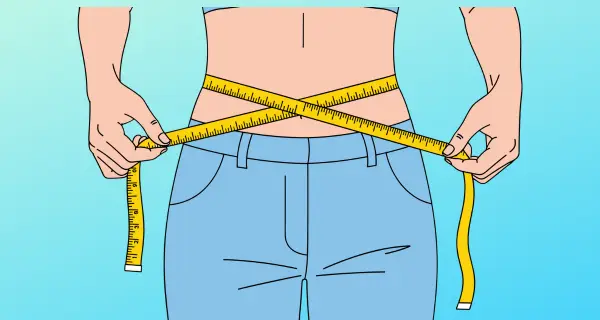A Deep Dive Into Anatomy, Injury, Trigger Points, and Hands-On Sports Massage Treatment
(Companion article to the instructional video above presented by Bob McAtee, LMT)
If you work with athletes—whether runners, soccer players, basketball players, hikers, or dancers—you’ve undoubtedly encountered clients complaining of persistent discomfort on the outside of the lower leg or ankle. They may tell you they “roll their ankle all the time,” that the lateral side of their leg feels tight or overworked, or that their ankle feels weak—or worse—unreliable.
When most people think about ankle problems, they immediately jump to ligaments: a sprain of the anterior talofibular ligament (ATFL), overstretching of the capsule, or residual instability. But many chronic ankle issues are not ligament problems at all—they are soft tissue issues related to a deeply underrated muscle group: the fibularis muscles, still commonly referred to in older texts as the peroneals.
In the sports massage video accompanying this blog, Bob McAtee, LMT, demonstrates techniques for treating these muscles with precision—integrating soft tissue mobilization, stripping, pin-and-stretch, active engagement, and trigger point release. What follows here is a comprehensive written exploration of this anatomical region, why it is so commonly injured, how to assess it, and how skilled manual therapy—including the sports massage methods demonstrated by Bob—can make a profound difference in recovery.
Meet the Fibularis Muscles: The Lateral Line of Stability
The fibularis group is made up of fibularis longus, fibularis brevis, and fibularis tertius. They sit on the lateral side of the lower leg, running parallel to the fibula and attaching into the foot. Although small compared to the gastrocnemius or tibialis anterior, their influence on foot mechanics is enormous.
Fibularis longus begins high on the lateral side of the fibula. It travels down the outside of the leg, ducks behind the lateral malleolus, crosses under the foot like a stirrup, and inserts near the first metatarsal and medial cuneiform. This under-foot insertion is important—it means the muscle can support the transverse arch of the foot.
Fibularis brevis originates lower down on the fibula and attaches onto the base of the fifth metatarsal (that little bony bump you can feel on the outside of the foot). This is the muscle that often takes the brunt of an ankle inversion injury.
Fibularis tertius—present in about 9 out of 10 people—is the smallest and least powerful. It assists the longus and brevis but plays a larger role in proprioception and fine adjustments during foot placement.
All three muscles evert the foot, meaning they pull the foot outward, and two of them (longus and brevis) assist with plantarflexion. In functional movement, they work in what we might call the “fine control” department. They prevent the ankle from rolling inward, stabilize the lower leg during walking and running, and help maintain balance on uneven surfaces. They are dynamic stabilizers—not just movers.
Without strong fibularis muscles, the ankle behaves like a door hinge without screws: wobbly, unpredictable, and prone to sudden collapse.
Why the Fibularis Group Matters More Than You Think
In massage and rehab, we give plenty of attention to the gastrocnemius-soleus complex, and we work diligently on the tibialis anterior when shin splints present. But the fibularis muscles are consistently ignored in training programs and manual therapy sessions unless someone has had a sprain.
Yet, they are involved in almost every step a human takes.
Think about gait. When the foot hits the ground, pronation begins. The fibularis longus and brevis act as controllers of pronation, not antagonists to it. They help manage the descent of the foot toward the ground, preventing it from collapsing too aggressively. In this way, they serve as shock absorbers.
But their true heroism appears in moments of unpredictability—the uneven trail, the unexpected pebble, the misstep off the curb. When the ankle threatens to roll inward, the fibularis muscles fire reflexively to stop the inversion. If they are weak, fatigued, or impaired, the foot continues rolling inward, and the familiar ankle sprain occurs.
In fact, studies show that after a single inversion sprain, neuromuscular inhibition of the fibularis muscles can last for weeks to months if not addressed. This inhibition fuels the cycle of repeated sprains.
The cycle looks like this:
-
Ankle inversion sprain
-
Reflexive inhibition of the fibularis muscles
-
Weakened lateral stability
-
Increased chance of another sprain
-
Repeat
Sports massage is uniquely effective in breaking this cycle by restoring tissue health, reducing reflexive muscle guarding, and improving neuromuscular awareness.
Common Injury Patterns: When the Fibularis Group Fails
Fibularis dysfunction usually falls into one of three categories:
1. Tendinopathy (often misdiagnosed as chronic ankle instability)
Fibularis tendinopathy occurs when the tendons—especially the brevis tendon—become inflamed or irritated. Pain is felt behind or below the ankle bone and along the lateral foot. Runners and hikers often describe a burning or aching pain that increases with mileage or uneven terrain.
2. Muscle strain
Strains typically occur during sudden change of direction, acceleration, or landing from a jump. Athletes describe a sudden “pull” or “grab” along the outer leg.
3. Avulsion of the fifth metatarsal
This one is dramatic. During a forceful ankle inversion, the fibularis brevis tendon can pull so hard on the fifth metatarsal that it actually pops off a tiny chip of bone.
Fibularis injuries are frequently hidden beneath a more obvious ankle sprain diagnosis. But a clue often reveals itself during palpation: tenderness along the length of the fibula where the muscles lie, rather than solely at the ligament.
Trigger Points: The Fibularis Muscles’ Silent Alarm System
Trigger points in these muscles are extremely common, especially in clients who:
-
Have a long history of ankle sprains
-
Overpronate
-
Wear poor footwear (minimal lateral support)
-
Play sports on uneven terrain
Clients rarely come in saying, “I have trigger points in my fibularis longus.” What they say instead is usually something like:
“My ankle feels weak.”
“It feels like I could roll it at any moment.”
“It gets worse when I run, especially downhill.”
Trigger points in fibularis longus refer pain into the lateral ankle and sometimes across the top of the foot. Trigger points in fibularis brevis refer to the base of the fifth metatarsal. In the clinic, when we find and release these points, clients often express surprise at how deeply they feel the relief—not only in the muscle, but in their sense of stability.
Trigger point therapy here is enormously valuable because the fibularis group is prone to chronic overload more than acute overload. Once stressed, the tissue becomes taut, reactive, and guarded. Manual pressure helps restore elasticity and reduces the nervous system’s “protective gripping.”
Clinical Assessment: What to Look For
A thorough fibularis assessment does not stop at the site of pain. It includes testing muscle strength, palpating the tendons around the ankle, and observing foot mechanics during functional movement.
One of the simplest tests is resisted eversion: have the client try to turn their foot outward against your hand. Pain, weakness, or shaking can indicate dysfunction.
Palpation is the real key. Begin high near the head of the fibula and work slowly down the muscle belly toward the lateral malleolus. The most sensitive areas are often where the muscle transitions to tendon. If you continue toward the base of the fifth metatarsal and the client nearly jumps off the table, you have likely found the involvement of fibularis brevis.
Balance testing can also reveal fibularis dysfunction. Ask the client to stand on one foot, then repeat with eyes closed. Excessive wobbling or immediate loss of balance usually indicates weak stabilizing support from the lateral ankle tissues.
Sports Massage and Soft Tissue Therapy
(As Demonstrated by Bob McAtee, LMT)
Bob’s approach—demonstrated beautifully in the video—is methodical, calm, and deeply clinical. He works along the fibularis line using slow, intentional strokes, gradually increasing depth as the tissue warms.
He begins by warming the tissue with broad strokes, then transitions into more specific work:
-
Longitudinal stripping along the muscle fibers
-
Cross-fiber friction at the tendinous portion just behind the lateral malleolus
-
Pin-and-stretch techniques, where the muscle is shortened, compressed, and then lengthened under pressure
This is where Bob’s work is so different from a generic massage. He doesn’t just press; he invites the tissue to change.
During his pin-and-stretch sequences, the client actively moves their foot into eversion while Bob applies precise pressure. This is not passive work. It is neuromuscular re-education. It teaches the body, “This is the motion. This is the pathway. You are safe to move again.”
Sports massage for the fibularis group restores:
-
Slide and glide between tissue layers
-
Circulation to chronically tight regions
-
Coordination between muscle and tendon
Manual therapy here is not just about pain relief—it is about restoring a sense of stability, which is what these muscles exist to provide.
Stretching and Strengthening: The Missing Link
Because these muscles function as stabilizers, traditional stretching is not always the best first-line solution. Many athletes stretch aggressively when what they actually need is improved control and endurance.
Once trigger points are released and soft tissue texture improves, the muscles respond beautifully to strengthening. The simplest strengthening exercise—resisted eversion using a band—is easily prescribed as homework.
But the most transformative exercise is not strength-based at all. It is proprioceptive training—balance work.
Standing on one leg while performing subtle ankle adjustments teaches the fibularis muscles to fire instinctively and quickly. Progressions eventually include unstable surfaces and eyes-closed training.
When to Refer Out
As therapists, we know when we can help and when further evaluation is needed. Any of the following require referral to a physician or sports medicine specialist:
-
Pain at the base of the fifth metatarsal that does not resolve quickly
-
Inability to bear weight after injury
-
Popping sensation followed by swelling and weakness
-
Visible deformity or bruising along the lateral foot
Avulsion fractures and full-thickness tendon ruptures need imaging and medical management.
Final Thoughts: Why Every Therapist Should Love the Fibularis Muscles
There is something gratifying about working on these muscles. They respond predictably and quickly. Clients walk off your table feeling taller, more stable, and more confident in their movement.
The fibularis muscles may be overlooked, but they are deeply influential. They determine how confidently we walk on uneven surfaces, how we recover from missteps, and how resilient our ankle remains in sport and in life.
With skilled, focused manual therapy—and the kind demonstrated in Bob McAtee’s video—you can profoundly change the way a client moves.
You can give them back their stability.
You can give them back their confidence.
And every therapist knows: when you restore confidence in movement, everything else follows.
Ready to learn more about Sports Massage Therapy? Check out our latest online CE course presented by Bob McAtee – Sports Massage Therapy Course










